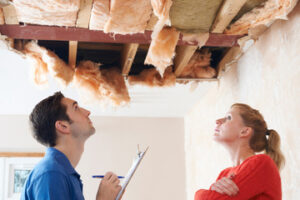Choosing the right windows and installing them properly is essential for energy efficiency. Accurate measurements are vital for ensuring that your new windows will fit correctly and seal tightly.

Carefully inspect your old windows for signs of rot or damage before starting the project. If necessary, you can address these problems with wood treatments or epoxy fillers. Contact Window Replacement Ellicott City, MD for professional help.
Windows are a major source of heat loss in winter and heat gain in summer, and upgrading them with more efficient double- or triple-pane glass and frames can reduce energy bills significantly. Enhanced window insulation also helps maintain a comfortable indoor temperature year round and eliminates drafts.
Homeowners have many window replacement options to consider, including style, size, frame material and energy efficiency. Window frames can be made of wood, vinyl, fiberglass or aluminum, and are available in a variety of colors and finishes. Energy-efficient window frame materials typically offer a combination of durability and low maintenance requirements. Window glass is often made of fiberglass or wood composite, and can feature a low-E coating and argon gas fill to help improve thermal performance.
Energy efficiency ratings for windows are based on their glazing U-value and solar heat gain coefficient (SHGC), as well as other factors like air infiltration, water leakage and condensation resistance. Window manufacturers that participate in the voluntary Energy Star program display stickers on their products indicating their energy-efficiency rating.
Window replacement is a great time to upgrade to more energy-efficient windows, since replacing old single-pane windows can cut home heating and cooling costs by up to 15%. However, homeowners should make sure to choose windows that meet local building codes and are properly installed by a professional window contractor.
During the installation process, window contractors should carefully measure and prepare the existing window opening and frame to ensure a proper fit. A spray foam application around the exterior of the new frame can help create a tight seal and prevent air leaks. In addition, window installers may use shims to level the new window frame within the rough window opening and to ensure a plumb finish. Window replacement can be a messy project, and homeowners should prepare for dust and debris during the installation process. Those undergoing a more extensive home remodel may want to consider rolling window replacement into the larger project to save on cleanup and disposal fees.
Durability
When properly insulated and sealed, replacement windows can offer significant increases in comfort, resale value, and durability. Choosing the right materials, like wood or vinyl, is essential to ensure the long-term performance of your new windows. Additionally, having the right window size and type is key to maximizing energy efficiency.
There are three basic types of replacement windows: sash kits, insert replacements, and full-frame units. A sash kit—such as the one Tom found at the Newton house—gives an old window frame new movable parts, including jamb liners and sashes. The liners are fastened to the side jambs of the existing window opening, and the sashes are slipped in between. These windows do not require removing the home’s siding or altering the wall, making them a good option for homes that need to address only cosmetic concerns.
Full-frame replacement windows, on the other hand, are designed to replace the entire head and sill of an existing window. They require removing the rough framing of the window opening, so this method is often part of a larger remodeling project. However, a full-frame window can solve a variety of underlying problems, such as water damage or structural issues, and they allow homeowners to change the size and style of their existing windows.
Regardless of the type of replacement windows you choose, it’s important to hire a professional window installation company for your project. Not only will a certified installer have the technical expertise to install your new windows correctly, but they should also know how to incorporate insulation and sealing techniques that maximize performance.
To ensure that your replacement windows fit properly, you’ll need to measure the width and height of your existing window openings. The measurement needs to be exact; a window that’s too small or too big will create leaks and cause operational issues. Additionally, the sash should be removed before measuring to remove the sash locks and to expose the sash weight pockets in the side jambs.
When replacing your windows, be sure to choose a product that offers a limited lifetime warranty. This will help ensure that your replacement windows last as long as possible and provide you with peace of mind. Additionally, choosing a local, reputable window replacement company can help ensure that you get the best service and quality for your investment. Finally, if you’re concerned about paying for your new windows up front, many companies offer 0% financing to qualified buyers.
Security
New windows can provide improved security with advanced locking systems, and they may come with built-in sensors that monitor movement inside a house and send an alert to the homeowner when someone approaches. They can also increase home safety with impact-resistant glass and can help prevent costly damage to a property in the event of a storm or tornado. ENERGY STAR-certified windows conserve energy to reduce utility costs and help homeowners save on heating and cooling.
Homeowners can choose from a wide variety of window frames, materials, and glass options to meet their specific requirements and aesthetic preferences. The frame material can affect durability and the average lifespan of a window, while the glass and glazing type play a role in both energy efficiency and functionality. For example, annealed glass is a common choice for basic replacements but doesn’t offer much protection against heat loss in the winter and heat gain in the summer, while tempered glass is made to shatter into small, dull pellets instead of sharp shards, which can significantly improve overall safety.
When seeking approval for window replacement in a historic or protected building, it’s important to present research that demonstrates how the updated windows will not only improve function and save energy but maintain architectural aesthetics. In areas prone to severe weather, highlighting the impact-resistant features of modern windows can also be an effective way to demonstrate how replacements can help protect historic properties from potential damage and loss of life.
Window replacement can be a large and expensive investment, but many installers provide financing options like store credit cards or loans to make the project more affordable for homeowners. This makes it possible for homeowners to enjoy the benefits of new windows sooner and can help them build a comfortable and safe living space with up-to-date features that they will appreciate long after moving in.
It’s also worth comparing the warranty coverage of different companies to find one that best suits the homeowner’s needs and budget. For example, some window replacement providers will cover parts and labor for a specified number of years after installation, which can be useful in the case of malfunction or unforeseen issues that arise during the lifetime of the windows.
Aesthetics
A window replacement project isn’t merely a practical investment in home improvement; it’s also an opportunity to improve your home’s aesthetic. With a wide variety of styles, colors, and materials to choose from, you can create a look that’s uniquely yours while elevating the visual appeal of your home.
One of the most significant aesthetic concerns to consider when upgrading your windows is how they will fit with your home’s architectural style. For example, homeowners who choose modern styles can benefit from sleek aluminum frames that complement their contemporary design, while traditional homes can pair beautifully with classic double-hung and casement options. By aligning your new windows with your architectural design, you can create a look that’s both beautiful and welcoming to passersby.
The color of your new windows is another important aesthetic consideration. Many homeowners choose to match or complement the existing color of their home, while others opt for a bold look that creates a stunning focal point. Whatever your preference, we can help you find the perfect color for your home.
In addition to the aesthetics of your windows, it’s important to consider their function. High-quality windows are designed to maximize natural light intake and provide a connection to the outdoors, which can boost your home’s value and create a more inviting living space. However, if your windows are not properly installed, they can impact your home’s functionality and lead to air leaks and decreased energy efficiency.
If you’re planning a window replacement, be sure to hire a professional to ensure that your new windows are not only functional but also beautiful. A qualified installation expert will be able to re-size your window openings and replace the framing material, which can have a significant impact on your home’s appearance. They will also install new window hardware and accessories to further enhance your home’s aesthetic. For example, a bay or bow window can add a dramatic focal point to your home’s exterior, while transom windows above entry doors can add a touch of elegance. In addition, a professional will ensure that your new windows are installed properly and sealed against moisture to prevent damage from the elements.



